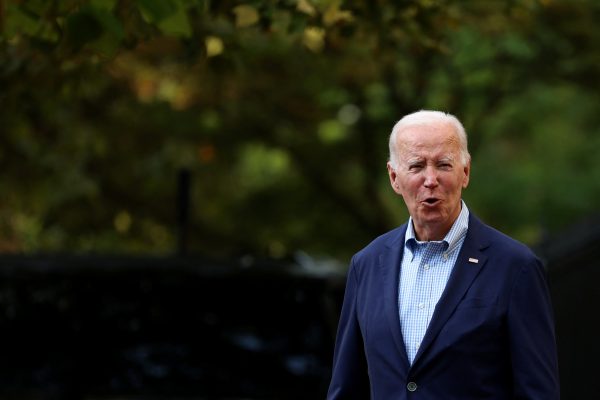Both Biden and Putin skipped the November 2022 APEC meeting in Bangkok, enabling Chinese President Xi Jinping to steal the show. One headline event in San Francisco could be the Biden–Xi bilateral meeting, unless a fresh eruption of US–China disputes keeps Xi in Beijing.
Another headline could be a Biden meeting with Indian Prime Minister Narendra Modi. India has been trying to join APEC since the institution was founded in 1989, but has been blocked first by its own protectionist policies and more recently by China. Now that the United States and India are steady geopolitical compatriots, Biden might invite Modi to side meetings in San Francisco that coincide with the APEC agenda.
Apart from these headline meetings, what accomplishments might leaders announce? Last year as host, Thailand revived the bold concept of a Free Trade Area of the Asia Pacific (FTAAP). The US agenda for APEC 2023 has nothing so ambitious. The theme announced in December 2022 is ‘Creating a Resilient and Sustainable Future for All’ — noble words but devoid of concrete goals and measurable mileposts.
The US State Department serves as the United States’ lead agency for APEC matters, but other departments exert greater control over trade and investment policies. The US Trade Representative and the Commerce Department share the trade turf, while the Secretary of the Treasury chairs the powerful Committee on Foreign Investment in the United States which monitors inward investment. The Treasury is in the process of acquiring new authority to prohibit outward investment to China and may use CFIUS to carry out that role.
Under the Biden administration, the US Trade Representative, Secretary of Commerce and Secretary of the Treasury have spent more time restricting commerce than removing barriers. Indeed, the strongest point of continuity between the Biden and Trump administrations is trade and investment policy.
Former president Donald Trump loudly, and Biden softly, both regard globalisation as bad for the United States. They see no benefit in lowering tariff and non-tariff barriers that keep foreign products out of US markets. Nor do they applaud US firms that invest abroad. For Trump, tariffs are a beautiful thing. His campaign for a second term promises higher tariffs. For Biden, ‘Buy America’, reinforced by generous subsidies, paves the path to prosperity. As well, Biden has amplified Trump’s policy of making trade policy the junior partner of security policy in the geopolitical contest with China.
The current US policy posture doesn’t leave much room for constructive engagement in APEC. But there has been no lack of APEC meetings during 2023. Starting with the December 2022 kick-off, the United States has hosted 15 meetings with ministers and senior officials to prepare for the heads of state meeting in San Francisco. Topics covered include finance, central banking, transportation, food security, disaster management, health, energy, women and the economy and trade. No doubt a great deal of useful information has been shared on national practices and policies.
But none of the preparatory meetings during 2023 laid the groundwork for fresh national commitments to promote closer economic ties within APEC. The landmark 1994 APEC meeting in Indonesia declared the famous Bogor Goals — ‘the long-term goal of free and open trade and investment in the Asia Pacific … no later than the year 2020’. At the time, US President Bill Clinton enthusiastically praised the Bogor Goals.
Times have now changed. With the onset of US–China geopolitical conflict, and with US doubts about globalisation, the Bogor Goals no longer feature as the APEC centrepiece.
For those APEC members that still welcome global engagement, trade and investment negotiations have long migrated to other forums. Indeed, many APEC members have come to see its role as a ‘sandbox’ to float proposals, leaving actual negotiations to other bodies. Multiple bilateral free trade agreements have entered into force between APEC members. Fresh regional agreements have been forged between ASEAN members, between China, Japan and South Korea, and in North America, where the North America Free Trade Agreement has been updated and renamed the United States–Mexico–Canada–Agreement.
In addition to these bilateral and regional agreements, mega-regional groupings such as the Comprehensive and Progressive Trans-Pacific Partnership (CPTPP) and the Regional Comprehensive Economic Partnership (RCEP) have emerged. In short, policy action on the underlying principles of the Bogor Goals has decisively moved from APEC to the CPTPP and RCEP.
Instead of joining the CPTPP (as intended by President Obama), the Biden Administration has launched the Indo-Pacific Economic Framework, largely focused on social goals, with a hint of US security guarantees, rather than trade and investment liberalisation. IPEF is no substitute for CPTPP.
If the next administration in Washington reverses the misguided Trump/Biden agenda of trade and investment restrictions, the world could end up with two FTAAPs — one centred on China within the RCEP framework, the other on the United States within the CPTPP framework. In their own spheres, each mega-regional could implement the Bogor Goals. The majority of APEC countries would, of course, want to join both the China-centred RCEP and the United States-centred CPTPP. Business leaders would welcome that outcome as the best possible solution to the prolonged US–China geopolitical conflict.
But more likely than not the next administration in Washington will follow the restrictive Trump/Biden agenda on trade and investment. While China is pursuing a regional trade policy, the US has shown at APEC that it has no competing vision. The unfolding scenario will likely lead to a single mega-regional group within the RCEP framework — centred on China, joined by most APEC countries. That would be a major diplomatic and economic loss to the United States, and an almost fatal blow to the liberal international economic order.
Gary Clyde Hufbauer is Senior Fellow at the Peterson Institute for International Economics.

